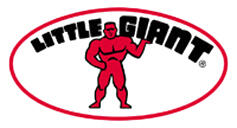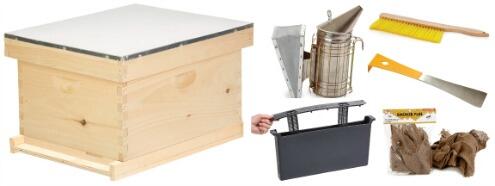A honey bee hive can provide an abundance of honey and beeswax, increased pollination for your garden crops, and hours of entertainment. This roundup of basic beekeeping tells you what to expect when diving into the art of apiary management, including the time, equipment and budget required.
No wonder more and more folks are making a beeline for beekeeping — a single hive of these tiny, social pollinators can provide 40 to 60 pounds of golden honey per year, as well as a few pounds of ever-useful beeswax. Plus, many crops need honey bees (Apis mellifera) to achieve good fruit set and high yields. This pollination benefit is becoming increasingly important because of industrial agriculture’s dependency on toxic pesticides, which poison bees’ food supplies and result in lower pollinator populations. For the willing homesteader or backyard gardening enthusiast, dedicating a small amount of time every couple of weeks to maintaining a beehive will render sweet returns indeed.
Like any livestock, bees need care and attention, though the time commitment can be far less than for dairy goats or even chickens. To help you decide whether beekeeping is a good fit for you, we asked Kim Flottum, long-time editor of Bee Culture magazine, to help us outline how to start beekeeping and what to expect in terms of initial start-up needs and costs, along with a basic apiary to-do calendar.
Tools of the Trade
Start with a new hive body and frames. Looking for a bargain on used beekeeping equipment may be tempting, but bees are susceptible to several diseases that can persist in old equipment. Also, you may come across suggestions to foster a wild swarm that someone has captured. The concern here is that a wild swarm (particularly one found in the western or southern United States) may have crossbred with aggressive Africanized honey bees. Buy either a package or a nucleus colony (called a “nuc”) of gentle bees with a queen.
The more common Langstroth hive, named after its inventor, consists of stacked, rectangular boxes that contain removable wooden frames with pre-formed foundations upon which the bees will build their wax comb. The removable frames in the Langstroth system make monitoring the health of the hive easy, and its popularity means tracking down replacement parts is convenient. Expect to pay about $250 for an unassembled cedar Langstroth hive that includes one hive body and two additional boxes called “supers” for honey storage, as well as 30 frames (10 frames per box) and a lid, cover, bottom board, and screws.
In addition to one or two initial hives, you’ll need a few specialized beekeeping tools. A smoker ($20) is used to suppress defensive behavior in bees. A hive tool ($10) looks similar to a crowbar and is used to remove frames from the hive. A feeder ($15) should be filled with sugar water and placed inside your hive to provide food when you first introduce the bees to their new home and during periods when nectar is scarce. Most beekeepers start with a hooded beekeeping suit ($70), which should include gloves. You may opt to later shed some pieces as you become more comfortable around the bees. All in all, you’ll probably spend between $200 and $400 for your first hive and the basic beekeeping equipment (not including bees).
Which Bee Is for Me?
A typical bee package costs about $130, plus shipping, and holds 3 pounds of loose adult bees and an individually packaged queen. Alternatively, a nuc is made up of Langstroth-fitting frames already populated with bees, including a queen, and you simply slide the frames into your hive. Nucs are slightly more expensive than packages because they contain working frames — expect to pay approximately $150 for a nuc, which must be picked up rather than mailed.
Just as different breeds of cows or chickens are better suited to certain homesteads and purposes, some specific types of honey bees are best for home beekeepers. Flottum says every bee supplier strives to produce the calmest bees possible, but that Carniolan bees tend to be more subdued than the more readily available Italian bees. Some types of bees also have more resistance to pests and diseases. For example, Minnesota Hygienic Italians and bees with Varroa Sensitive Hygiene (VSH) traits have a high degree of resistance to Varroa mites, American foulbrood and chalkbrood.
The Apicultural Calendar
Before your bees arrive, do some homework and consider shadowing an experienced beekeeper so you’re able to recognize normal hive behavior and honeycomb structure, as well as what potential invaders, such as mites, look like. Many local beekeeping associations offer workshops, and Flottum recommends finding a nearby beekeeping mentor to help you learn the ropes. In our area, contact the Lehigh Valley Beekeepers Association.
According to the Backyard Beekeepers Association, you should plan on spending about 30 hours a year maintaining your hives. Your time commitment will parallel the pollen and nectar flows — when it’s peak gardening season, it’s also peak beekeeping season.
If you decide to keep bees, place your package or nuc order in winter for pickup when warmer weather arrives. One fine spring day, you’ll get a phone call from your post office or a local beekeeper declaring that your package or nuc of bees is waiting. Make sure your hive is assembled by this time and ready to immediately house its new residents. Carefully read directions about how to best install the bees into your hive. With a package, you’ll basically pour the colony into the hive, then lodge the queen’s cage between two of the frames. The queen’s enclosure will have a little plug of sugar candy on the end, which will prevent her from immediately joining the hive. Over the course of a few days, the hive will settle into its new home and simultaneously chew the queen free from her chamber. If you ordered a nuc, you’ll simply transfer the established frames with bees and the queen into your empty Langstroth hive. After your bees are successfully added to their hive, install the feeder.
Wait one week after you’ve installed your bees to do your initial inspection. Your goal will be to make sure the queen is laying eggs. Return at least once every week or two to check the hive’s overall health and monitor its growth. Becoming familiar with the life cycles and daily tasks of the bees will be key to your ability to assess their health and vitality.
As the weather warms, visits to the beehive will be mainly to look at the amount of honey in storage and to make sure there’s a thriving population of active, healthy bees. Begin preparations for colder weather by installing a windbreak and a mouse guard at the entrance. Throughout the entire season, whenever pollen or nectar levels are low, you’ll need to provide protein supplements to stand in for pollen, and sugar water in place of nectar. Just as you would never let your cows go without hay or your hens go without feed, you should never let your bees go hungry.
The Sweetest Reward
Your colony probably won’t produce enough honey for a harvest the first year, and your focus should remain on learning the ways of the hive. In the second year, however, and in years thereafter, the honey harvest will take place around September. When harvesting honey, you must leave enough to feed your hive through winter. According to Flottum, a colony located in the northern half of the United States should have at least 100 pounds of honey stored for winter; a colony in the southern half will need at least 50 pounds. Depending on the depth of your hive design and the number of frames used, your hive should weigh between 150 and 200 pounds total — including the bottom, boxes, frames, bees, brood and honey — at the beginning of winter. Use a handheld spring scale to weigh your hive, and if it weighs more than this amount, you can remove the excess honey for your use.
Honey is ripe for gathering when a frame has at least two-thirds of its cells filled with honey and capped with wax. A simple harvesting technique is “brushing.” This involves holding a ripe frame over the hive and gently brushing as many bees as possible back into the hive before placing the mostly deserted frame into a separate box. To extract the honey from the comb, just cut away the wax capping with a knife and then remove the honey from the wax comb either by manually crushing and straining the comb or by using a mechanical extractor.
Apiary management is an activity that most everyone in your family can enjoy. In addition to savoring the sweet golden elixir and useful beeswax, you’ll all appreciate the increased garden harvests and marvel at the hustling hive’s diligence.
*Mother Earth News




